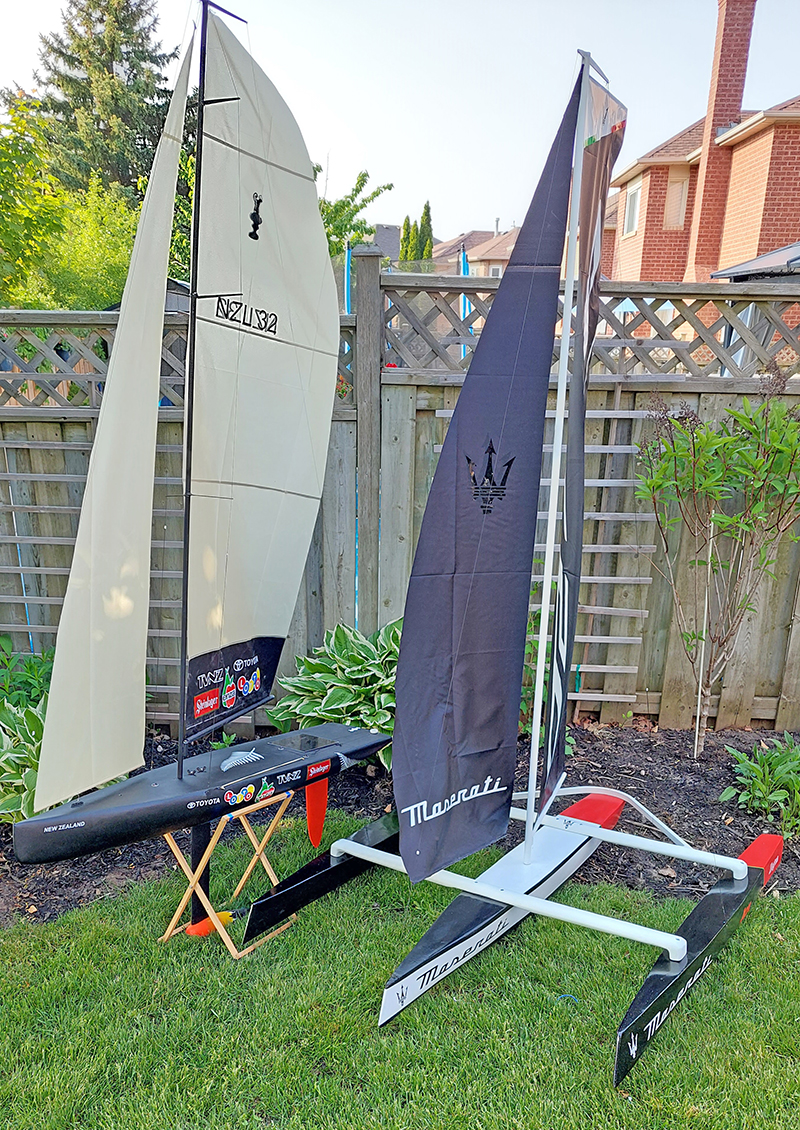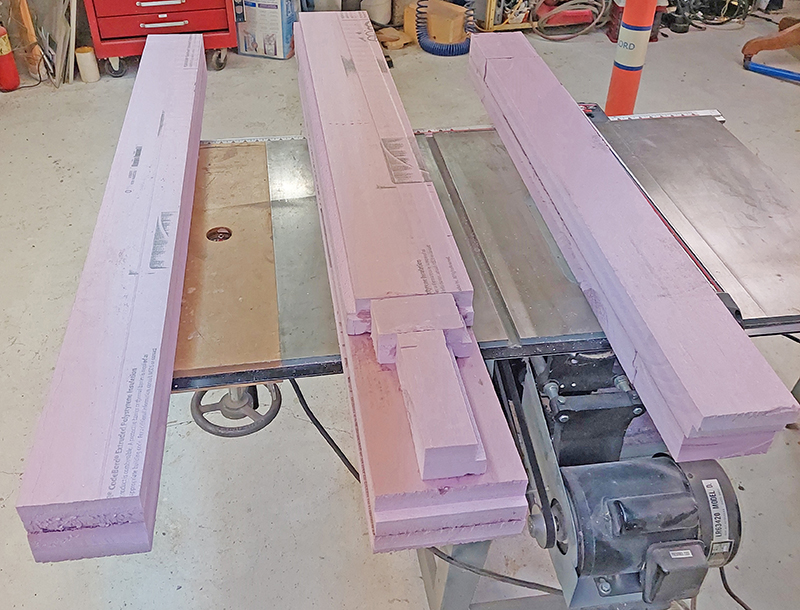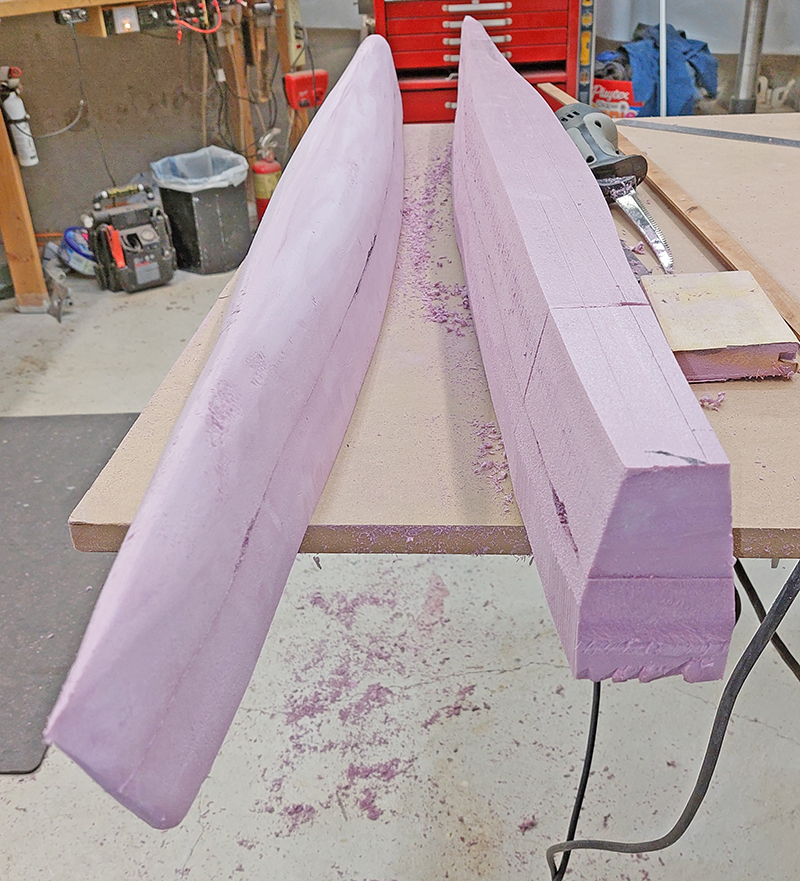
By Mark Borg
I have been using WEST SYSTEM® Epoxy for over 20 years. Over that time my projects have included building carbon fiber bikes and an amphibious robot to test my autonomous navigation software for my PhD in Robotics. Most recently, however, I built RC scale models of the 1995 America’s Cup winner Black Magic and the Multi70 trimaran, Maserati.
Black Magic Build
In 1995 the New Zealand boat NZL 32 Black Magic won the America’s Cup with a game-changing design. The win turned yacht racing on its ear and cemented itself in my memory. 28 years later, I recreated Black Magic using foam, fiberglass, and WEST SYSTEM Epoxy.
I cut and shaped the hull from a block of pink insulation foam and covered it with 6 oz. fiberglass. Since this model was built in warm weather, I used WEST SYSTEM 105 Epoxy Resin® and 206 Slow Hardener®. I reinforced the bow and stern areas with Kevlar® and the same epoxy to withstand bumps with docks. The model is 48″ (122 cm) long and 96″ (244 cm) high.
To balance the sails, the model has a 10 lb (4.5 kg) poured lead keel. I made the keel by shaping a piece of foam, making a plaster-of-Paris mold, and then pouring the molten lead into it. This is akin to a lost wax mold. Two threaded rods were cast into the lead keel to connect the keel to the hull. Foam pieces were fitted around the threaded rods and shaped to a wing foil profile. Over the foam, I used carbon fiber fabric to support the weight of the keel while the boat is heeling. The carbon fiber was wet out in place with WEST SYSTEM Epoxy and then vacuum bagged to remove any air bubbles.
Maserati Build
My second boat is a scale reproduction of the Multi70 trimaran, Maserati. The model is 53″ (135 cm) long, 37″ (94 cm) wide, 96″ (244 cm) high, and only has 3 lbs (1.4 kg) of lead.
Similar to the monohull, the multihull is hand-shaped out of pink insulation. To match the shape of the original boat, I used photos to get the proportions and ratios correct. To shape the foam, I used a hot wire foam cutter, utility knife, automotive-style body file, and sandpaper in that order. Wire cutting gave the best finish with the least amount of mess. Unfortunately, almost every surface on the hulls involved a compound curve that required filing and sanding—the messiest ways to shape foam. Filing leaves a less-than-desirable finish since sometimes the file digs in unexpectedly and removes a chunk of foam.
In places where filling of the foam was needed, I used Bondo® Spot Putty or lightweight drywall compound. I used these fillers as opposed to thickened WEST SYSTEM Epoxy since the primary goal for the filler material was to be easier to sand than the base foam and strength was not a concern. This easy-to-sand filler minimized any distortion in the overall shape of the hulls from my sanding.
Once the correct shape was achieved, the hulls were covered with two layers of 4 oz. fiberglass. I used 4 oz. fiberglass and WEST SYSTEM Epoxy on the trimaran as opposed to the 6 oz.
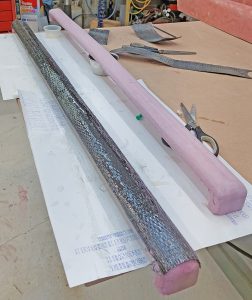
fiberglass that I used on the monohull, due to the improved draping capabilities that I required on the sharper hull form of the multihull.
For the cross beams, I used four layers of unidirectional carbon fiber with WEST SYSTEM 105 Epoxy Resin and 205 Fast Hardener®. The top and bottom layers of carbon fiber run longitudinally, and the middle two layers run on opposite 45-degree angles. I used the 205 Fast Hardener because I was using a vacuum bag to consolidate the laminate and I wanted the layup to set quickly. This increased strength was required to provide the support needed for the model to “fly” on one hull.
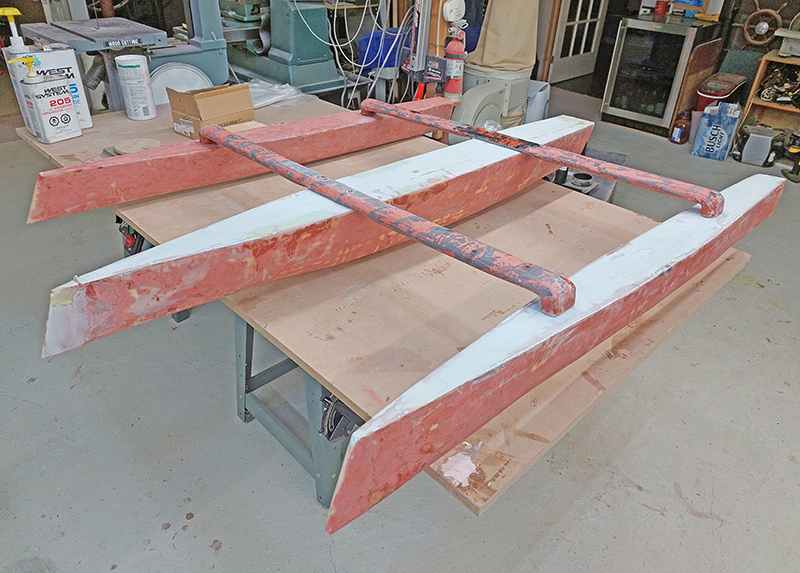
Additional Details
The sails for both boats are made from nylon spinnaker material (ripstop). The masts utilize ¾” (19 mm) diameter aluminum extrusion. The standing rigging is made from fly-fishing line, and fishing barrel swivel snaps are used to quickly attach all the rigging to the boat. To set the rig taunt, small, homemade guy line tensioners (like the ones used on a tent) allow for the rig to be tensioned. The logos were designed with CAD software and cut out of colored vinyl. The logos with multiple colors required perfect alignment so register marks were used.
The rudder and sails for Black Magic are RC servo-controlled. The trimaran still needs to be kitted out with remote control servos for the rudder and sail plan. In the future, I plan to add a manually retractable skeg and two manually adjustable, carbon fiber, “C” shaped hydrofoils.

